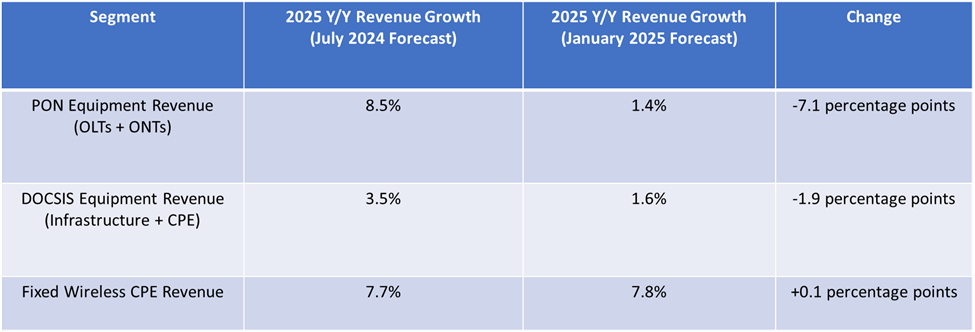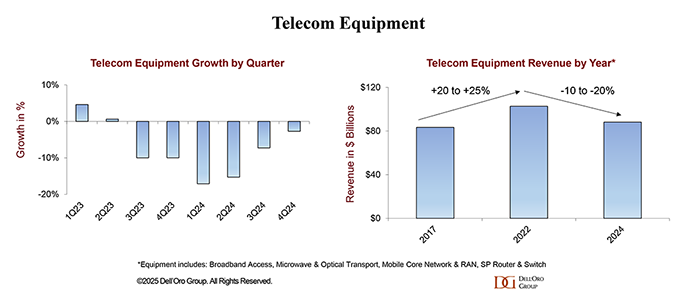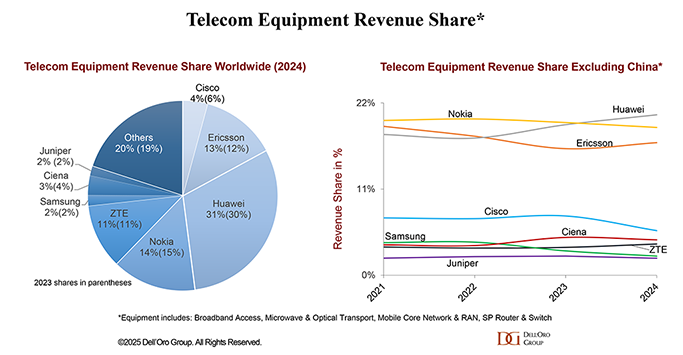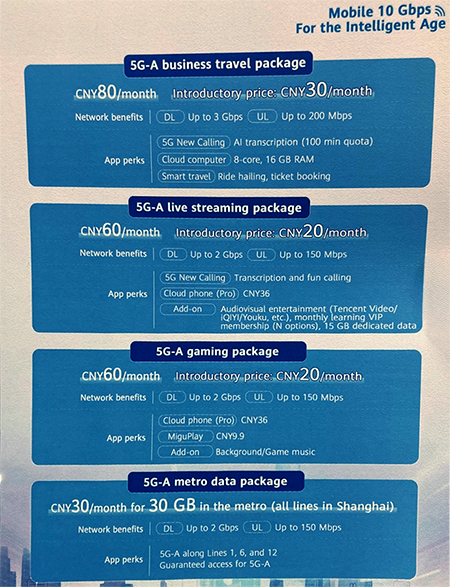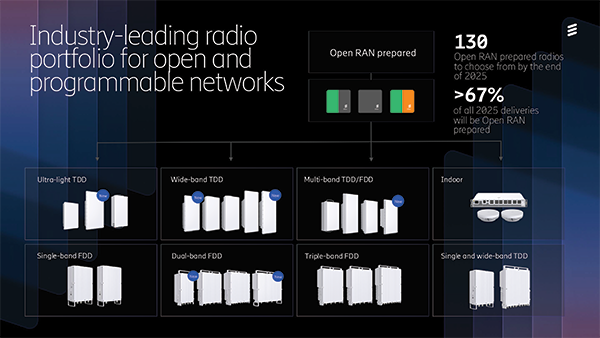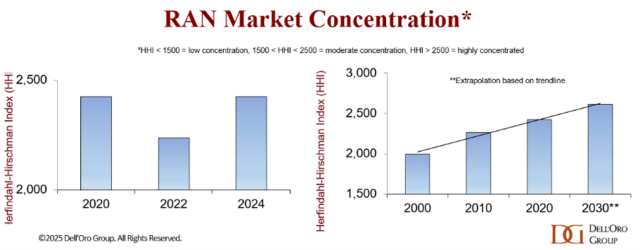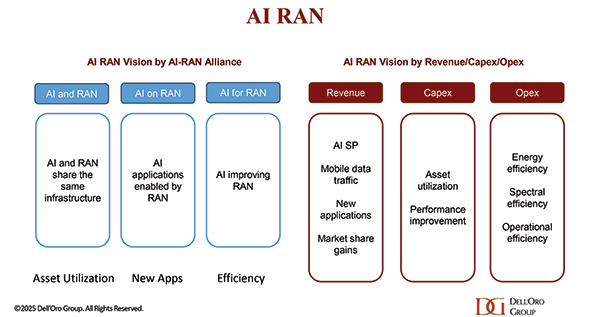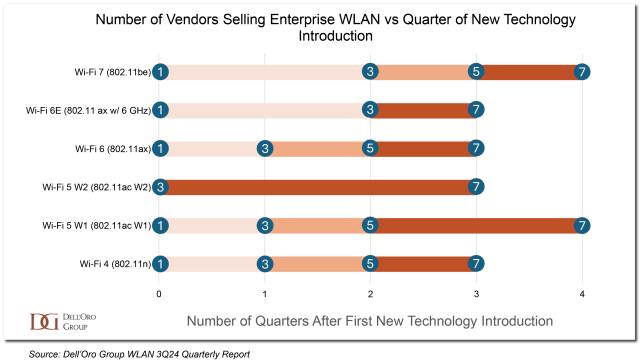Charter’s proposed $34.5 billion acquisition of Cox Communications reflects just how much the US broadband landscape has changed. The near-nationwide availability of fixed wireless access (FWA), combined with expanding fiber footprints, has put cable operators on the defensive as they struggle with net broadband subscriber losses. Back in September 2024, I detailed the situation in a blog titled, “US Telcos Betting on Convergence and Scale to End Cable’s Broadband Reign”:
Going forward, the 1-2 punch of FWA and fiber will allow the largest telcos to have substantially larger broadband footprints than their cable competitors. Combine that with growing ISP relationships with open access providers and these telcos can expand their footprint and potential customer base further. And by expanding further, we don’t just mean total number of homes passed, but also businesses, enterprises, MDUs (multi-dwelling units), and data centers. Fiber footprint is as much about total route miles as it is about total passings. And those total route miles are, once again, increasing in value, after a prolonged slump.
For cable operators to successfully respond, consolidation likely has to be back on the table. The name of the game in the US right now is how to expand the addressable market of subscribers or risk being limited to existing geographic serving areas. Beyond that, continuing to focus on the aggressive bundling of converged services, which certainly has paid dividends in the form of new mobile subscribers.
Beyond that, being able to get to market quickly in new serving areas will be critical. In this time of frenzied buildouts and expansions, the importance of the first mover advantage can not be overstated.
So, maybe the specific combination of Charter and Cox was a surprise. But the notion that cable operators had to fight back by getting bigger was certainly not.
Network Upgrade Plans Likely to Stay the Same
Of course, there is no guarantee that this transaction will ultimately be approved. So, while the trade and legal reviews are getting underway, both operators still face competitors that are likely to accelerate their own marketing and sales initiatives designed to attract subscribers from the latest “corporate behemoth,” which only wants to stamp out competition and raise your broadband and mobile service prices. Charter and Cox, even though they have slightly different access network upgrade plans, will continue along their individual paths to raise speeds and improve signal quality across their HFC plant.
Fortunately, for both operators, the long-term vision of their access networks remains nearly aligned, though the timing might be slightly different. It’s worth a quick look at how Charter and Cox are both similar and different when it comes to their broadband access network strategies:
- Charter and Cox are moving forward with Distributed Access Architectures (DAA) using vCMTS and Remote PHY Devices. Charter is in the early stages of their RPD deployments, while Cox has converted nearly all of its existing optical node base to Remote PHY. Cox had historically relied on Cisco for its M-CMTS (Modular CMTS) platforms, an early precursor to Remote PHY, and subsequently took the next evolutionary step of homing RPDs to the existing CCAP installed base. While that did allow the operator to move to Ethernet transport between the headend and RPDs, the benefits of moving to a vCMTS architecture weren’t fully realized, which is why Cox is now working with Vecima’s vCMTS platform.
- Both Charter and Cox believe in using the Extended Spectrum flavor of DOCSIS 4.0, though Charter expects to deploy DOCSIS 4.0 earlier than Cox. This is because Cox is already running the vast majority of its network at 1 GHz with a mid-split architecture, while Charter is in the process of upgrading its usable spectrum from 750 MHz to 1.2 GHz (using 1.8 GHz amplifiers running at 1.2 GHz) using a high-split architecture. According to Charter CEO Chris Winfrey, “In terms of the network, Cox is largely through an upgrade for what we would call a mid-split upgrade…There’s no rush for us to go try to harmonize that into a high split footprint.” Winfrey also said, “In our planning, the eventual conversion to DOCSIS 4.0 with DAA doesn’t take place for years and it’ll be done at a lower cost as a result of them having already completed their mid-split and because of the scale that we’ll have at the time that we’re completing our own DOCSIS 4.0 and DAA upgrades.” In other words, Cox has a longer runway with its current mid-split, 1 GHz architecture delivering 2 Gbps downstream speeds. So, should the merger go through, the Cox systems would be delivering similar downstream speeds as the upgraded Charter systems, but would likely have reduced upstream capacity relative to the upgraded, high-split systems.
- Charter is also a proponent of GAP (Generic Access Platform) nodes and has begun deploying these modular nodes in its network to replace aging and discontinued units. Cox, on the other hand, has made no mention of GAP nodes and likely doesn’t need to in the short-term, given that it spent a good deal of capex years ago to upgrade to 1 GHz. Even Charter isn’t deploying GAP nodes universally across its network, as it will continue to source GAP and non-GAP nodes from multiple vendors.
- When it comes to vCMTS, Charter has hinted about having cores from multiple vendors, though to date it has only publicly announced Harmonic as its vCMTS supplier. Meanwhile, Cox just recently announced its selection of Vecima’s Entra vCMTS, which makes sense given the deployment of Vecima RPDs. But Vecima RPDs are also being deployed at Charter. So, does that mean that Vecima stands to win a share of Charter’s vCMTS business, as well? Although RPD and vCMTS interoperability is expected and is in deployment at other operators, Charter has made note of some interoperability challenges within its network. Thus, it utilizes Falcon V as a testbed for vCMTS and RPD interoperability, along with Vecima’s acquisition of Falcon V.
- When it comes to fiber deployments, Charter and Cox have different technology choices. Charter continues to use 10 Gbps DPoE (DOCSIS Provisioning over EPON) for both its RDOF-funded projects and its Greenfield fiber builds. In contrast, Cox was an early adopter of both GPON and the newer XGS-PON technology. As a result, Cox has a significantly higher percentage of PON (Passive Optical Network) connections compared to Charter in terms of total homes and businesses served.
It goes without saying that there are many variables from a technology perspective surrounding this proposed transaction that are likely to have profound implications on the cable outside plant and headend vendor landscape. The combination of two of the largest cable operators in the world ultimately reduces the number of opportunities for unique vendors, thereby furthering consolidation among those vendors. Should this deal move forward, I fully expect there to be some consolidation among equipment vendors as they look to grow their share at the new combined company.
